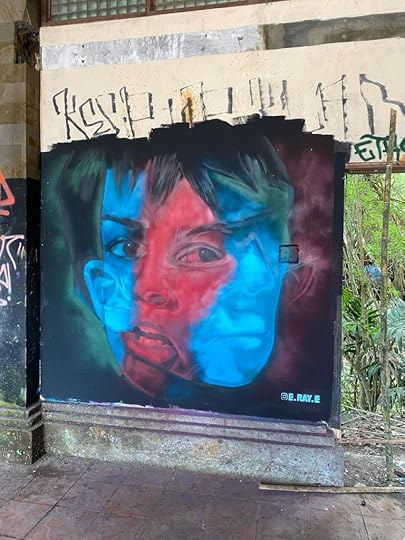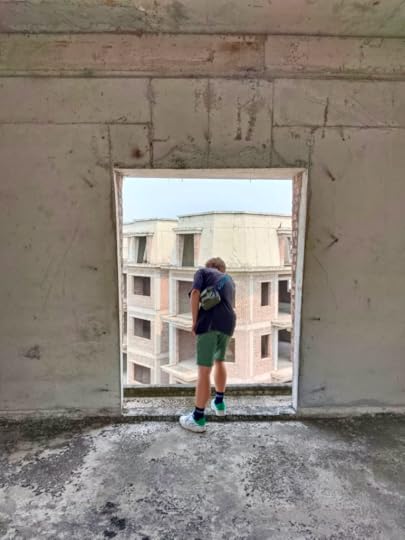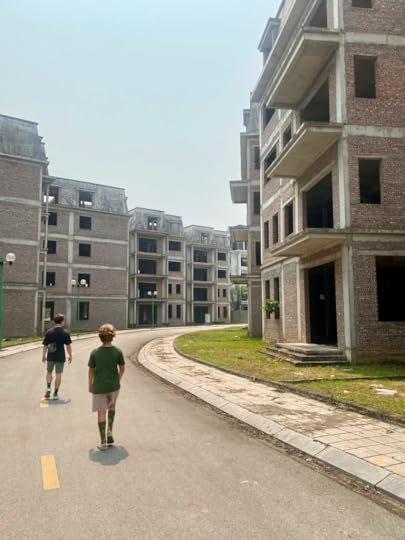Can aesthetic preferences be inherited?
When I studied philosophy at university decades ago I was captivated by philosophical aesthetics, particularly the sublime aesthetic experience, which encompasses chaos, asymmetry, distortion, imperfections as well as decay. And this fascination has never left me. Rather, it has set the tone for my research and my books.
The sublime aesthetic experience, as opposed to the beautiful, is initiated by phenomena or objects that provide the receiver with an aesthetic kind of pleasure that doesn’t match the “classical” concept of beauty.
The difference between the beautiful and the sublime concerns the difference between order and chaos; between symmetry and asymmetry; between predictability and unpredictability; between demarcation and boundlessness; between form and formlessness; between proportion and irregularity; and between the kind of aesthetic experience that nurtures one’s comfort zone and that which challenges or breaks it.
The beautiful and the sublime are at once diametrically opposed and mutually dependent on each other. In a sense, they embody the yin and yang of aesthetics. They are fundamentally different, but existentially dependent. For instance, it is nonsensical to speak about symmetry without at the same time understanding the concept of asymmetry, just as harmony cannot be grasped completely without its opposite, disharmony.

One of my many heroes within sublime philosophical aesthetics is French philosopher Jean-Francois Lyotard (1924–1998), who launched what he called the postmodern sublime, which he linked to the 20th-century Avant-Garde art. He viewed the sublime as an essential element of the artists who revolted against the Romantic “closed” pictorial space.
The aesthetic of sublimity liberates pictorial art from the demand to facilitate concrete messages, and thereby it sets free the power of creation.
Whereas Lyotard associates modernity with the nostalgic, romantic sublime, he relates postmodernity to the other form of sublimity, which, to him, encompasses the true sublime — or at least the kind of sublimity he finds the most interesting. The (postmodern) intense sublime moment revolves around the pleasure of It is happening, the delight of something shocking (an object or phenomenon) as well as the fear that It will stop happening, and that nothing further will happen. The dialectic of delight and fear, pleasure and pain, or the It is happening and the It can stop happening hence characterizes his definition of the sublime.

The sublime aesthetic experience can beneficially be interlinked with the prolonging of the design experience, and hence with object-related sustainability (which I have investigated in my book Aesthetic Sustainability).
But the focus of this article is the sublime aesthetics of decay.
In our culture, beauty is often considered a fleeting thing. Something that disappears as a result of decay, wear, or aging. Something that is “crisp” and new. In this way, beauty is connected to the polished, to the not-worn, to the “pretty,” and to the pure, aromatic, and proper.
However, there exist philosophico-aesthetic traditions that associate beauty with the uneven, unpolished, and corporeally challenging — rather than with newness — and even with aging, decay, and wear. This concerns the aesthetics of decay — a concept favored by photographers who are attracted to ruins and abandoned urban environments.
The aesthetics of decay celebrate decline! Aestheticians of decay like to show the beauty of peeling paint; tattered wallpaper; overgrown walls covered in wild, uncontrollable vegetation; and pockmarked rooftops infested with pigeon’s nests and spider webs — or, in other words, the beauty that appears when letting something “be,” allowing the ravages of time, wind, and weather to stamp objects and buildings.

There is a degree of rewilding within the sublime aesthetics, which is probably part of the reason why I have felt so attracted to the concept of rewilding ever since I first came across is, and am currently researching it in relation to nature, human life and design. The idea is letting go of control and allowing for wild nature to grow and develop in uncultivated manners.
And, now my oldest son has developed a fascination for decaying, abandoned buildings and urban areas.
He recently made a documentary about an abandoned amusement park here in Bali called Taman Festival Park (which I wrote about here), and when we visited Hanoi last week, he wanted to see an abandoned suburban area called Lideco Bắc 32 and photograph it. And so, we went.

It was an eerie place! But I totally understood his fascination with the quiet empty streets and the abandoned buildings. He was a bit disappointed that the vines and trees that he had seen grow wildly in photos on the internet had been trimmed, but the beauty of decay, the sublime horror, was predominant in this creepy silent place that had been built to house hundreds of families but never got off its ground.
When we are going to Europe this summer, he has a few decaying places and buildings lined up, and I am happy to come along.



